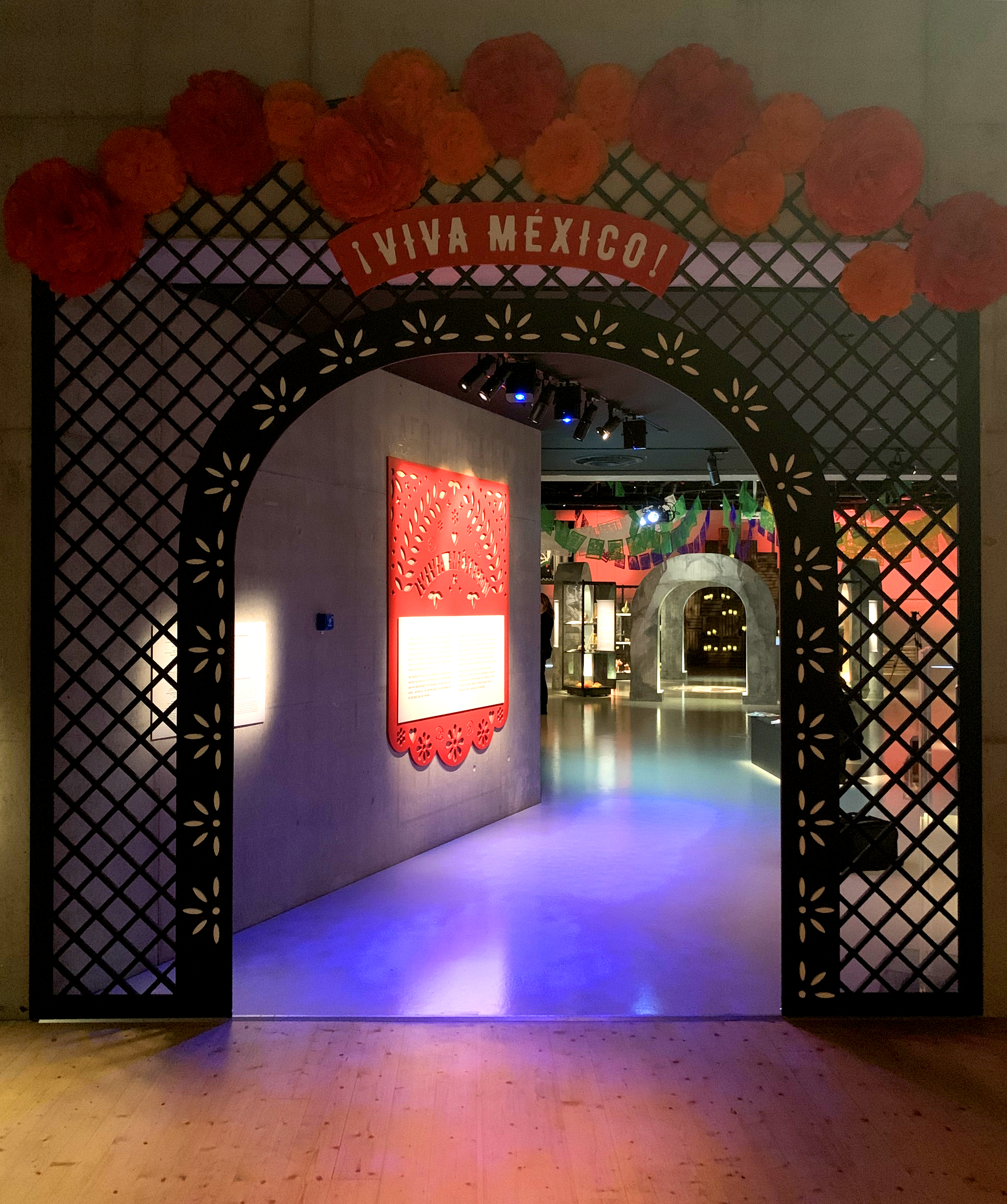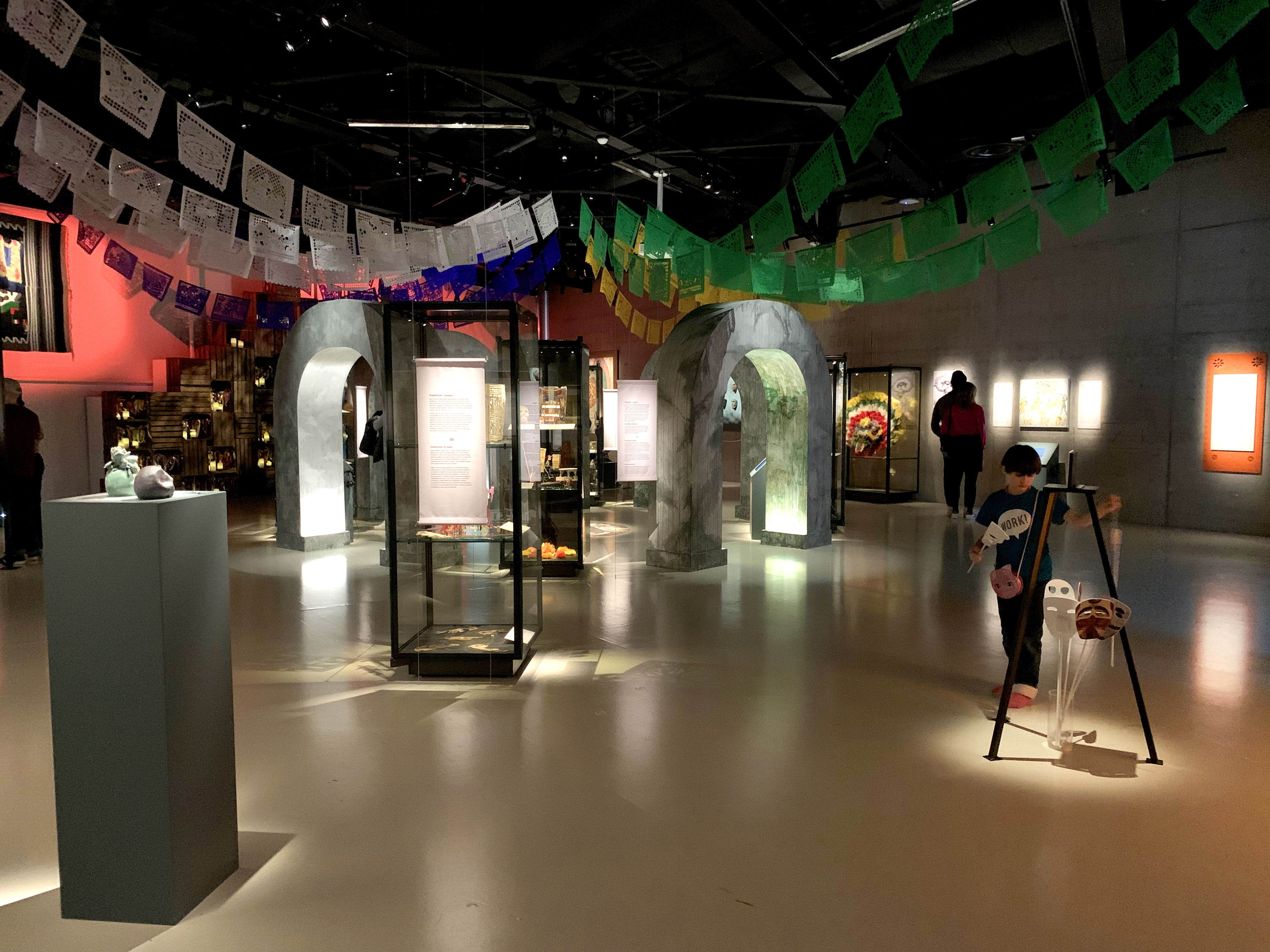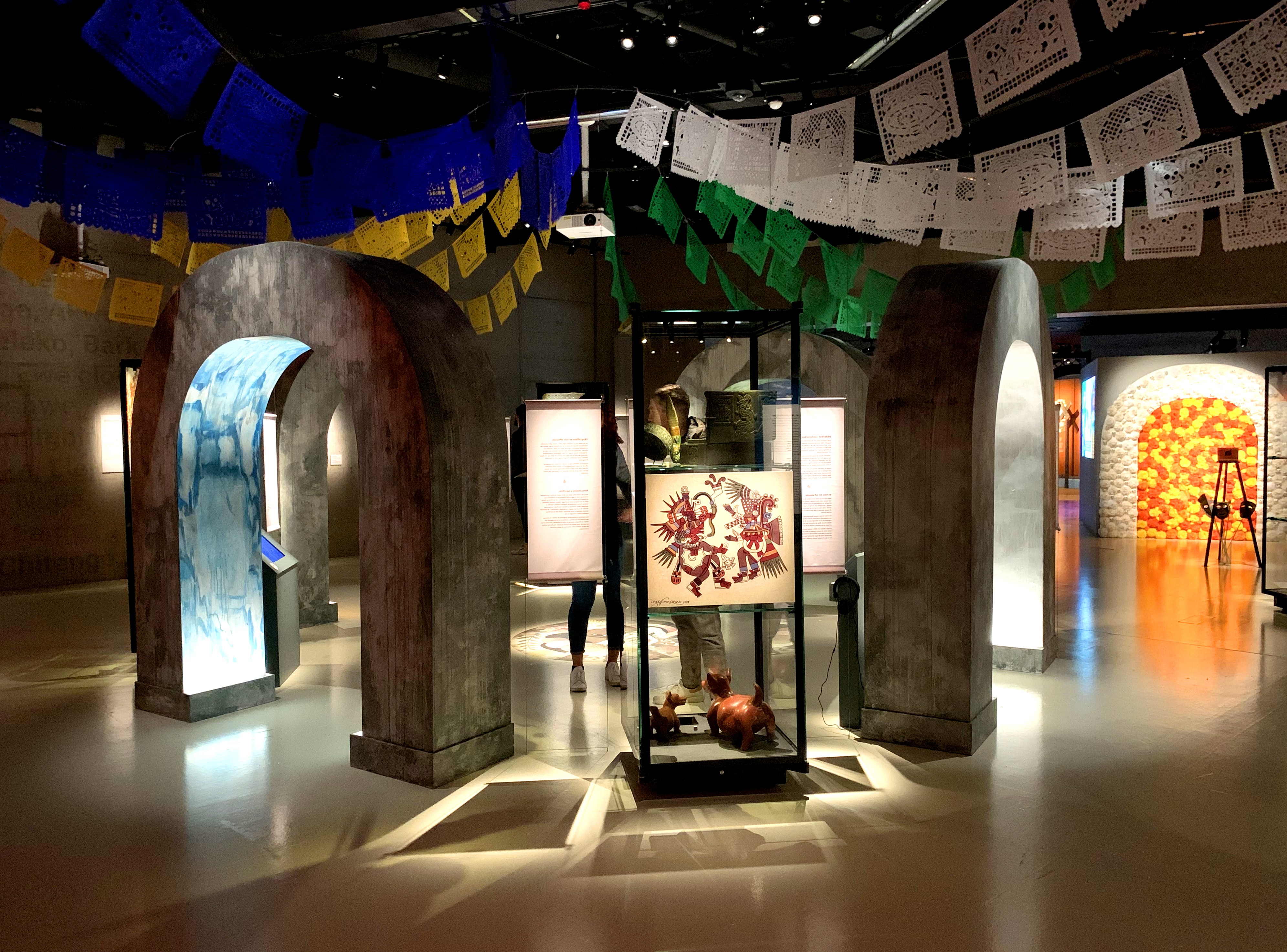Scenographic Design for the Exhibition ¡Viva México!
Idea, script & production: Världskulturmuseerna
Curator: Tina Landgren
Scenography: Diblik Rabia
Experts: Edmé Dominguez, Teobaldo Ramirez and Daniel Andersson
Animation Film: TÖNT AB
Ilustration: Felicia Fortes
Composer: Joaquin Garcia
Final art: Emma Engström
Decorative painting: P.Chr. Rusch & son AB
Lighting design: JS Light AB, Jan Simon through Ljusdesign AB.
Project description: The exhibition takes a tour of Mexico's history, that it is marked by both variability and resilience. It is about worlds that are created and perish, great cultures that flourish, an area that is conquered and a country that after a long struggle becomes independent. Stories of life and death follow us through the exhibition and capture a few moments in Mexico's history. This story is full of conflicts and tragedy but also resilience and humor. It is about darkness and tomorrow, about life and death.
The close relationship between life and death is a central theme in the Mexican cultural heritage. The traditions have been mixed and reshaped for thousands of years. Mexico's multifaceted origins and traditions show an exhibition that contains both struggle and courage, skulls and flowers, and how Mexicans are given a positive perspective about these subjects in many cultural aspects through the history.
Work description: The scenographic design is full of symbols that refers to the Mexican culture like the faith, honor the memory of those who are no longer here, respect and traditions.
The portal that frames the entrance to the exhibition is a gigantic papel picado, a characteristic element of traditional Mexican festivals. The sensation of seeing a piece of chopped paper is automatically associated with a festivity, a place of social coexistence, or a market, this was the main reason why the exhibition has such a peculiar entrance. Because the public enters not only to learn about the history of Mexico, but also to celebrate life and learn about the reasons why we celebrate the Day of the Dead.
The four arches represent the four cardinal points: north, south, east and west; as well as the four natural elements that were so important within pre-Hispanic cultures: water, fire, air and earth, and that are represented with the corresponding color inside the arch. Blue for water, yellow/orange for fire, white for air, and green for earth.
The papel picado hanging from the center visually echoes these colors, and the circular arrangement references the sun.
The selfie spot is inspired by funeral wreaths and the tzonpantli, which was an altar in the form of a frame where a set of skulls was mounted before public view in order to honor the gods. Both symbols signify the mix of cultures that emerged after the Spanish conquest.
The installation of crates in the form of a pyramid is inspired by two important places, each one has had its splendor in different stages within the history of Mexico and are part of our cultural identity.
The first is the Tajin pyramid in Veracruz, which is located on the Atlantic coast, in the Gulf of Mexico. This pyramid is known as the Pyramid of the Niches, and it was a ceremonial place, where altars used to be placed to honor the gods.
The second site is Ciudad Huacal located behind one of the largest markets in Mexico City, which is the Central de Abastos. Ciudal Huacal occupies a large area of the eight that belong to the Central, here the wooden boxes that transport fruits and vegetables are repaired, and that we Mexicans call "huacal". At this site, workers work 12-13 hour shifts in order to obtain a "better" salary than other sites.
Both places coexist within Mexican society. One represents our past with Mesoamerican roots and the other represents our global present and the harsh working conditions faced by the majority of the population. Despite any circumstance, Mexican society maintains a positive attitude and people find a way to survive.














